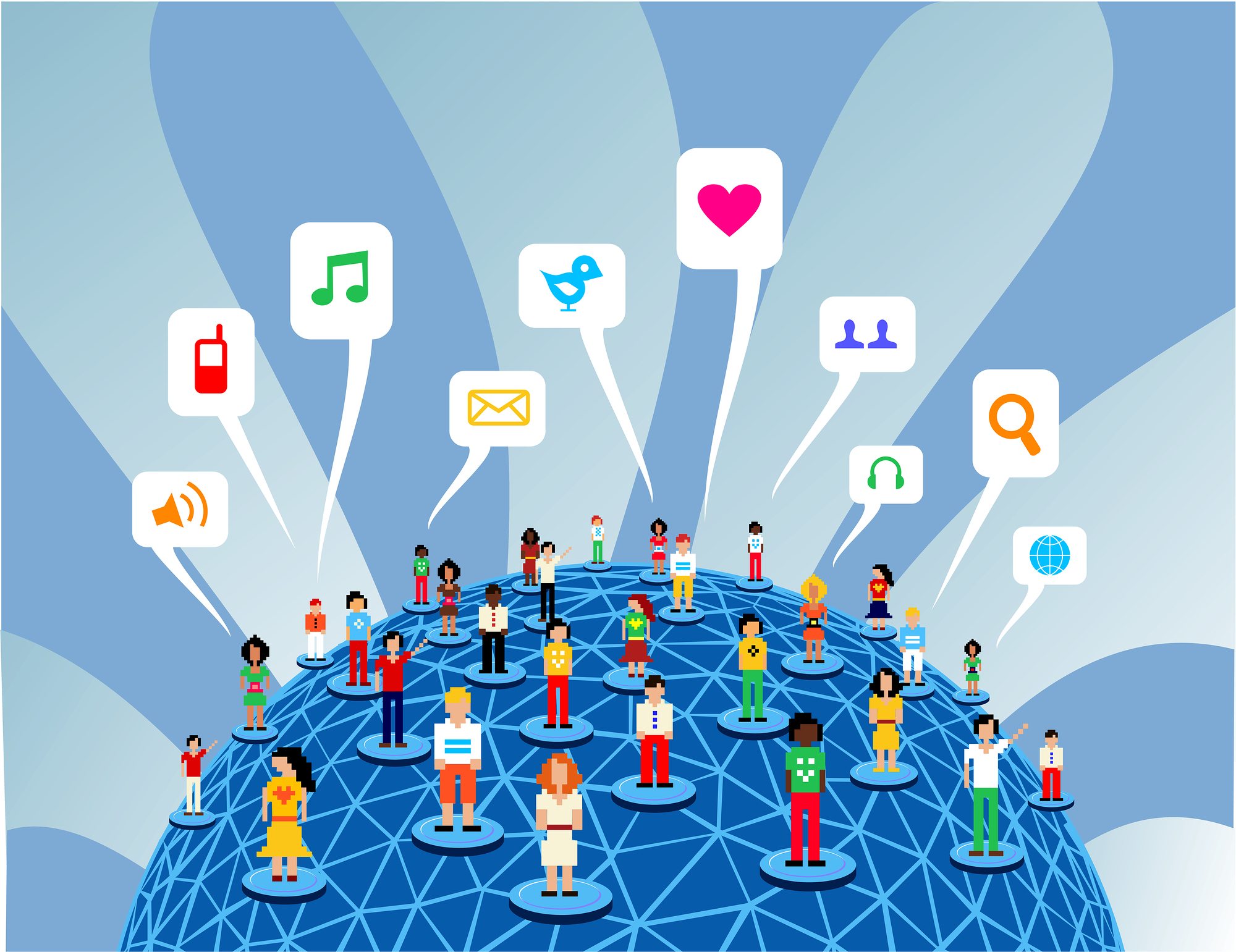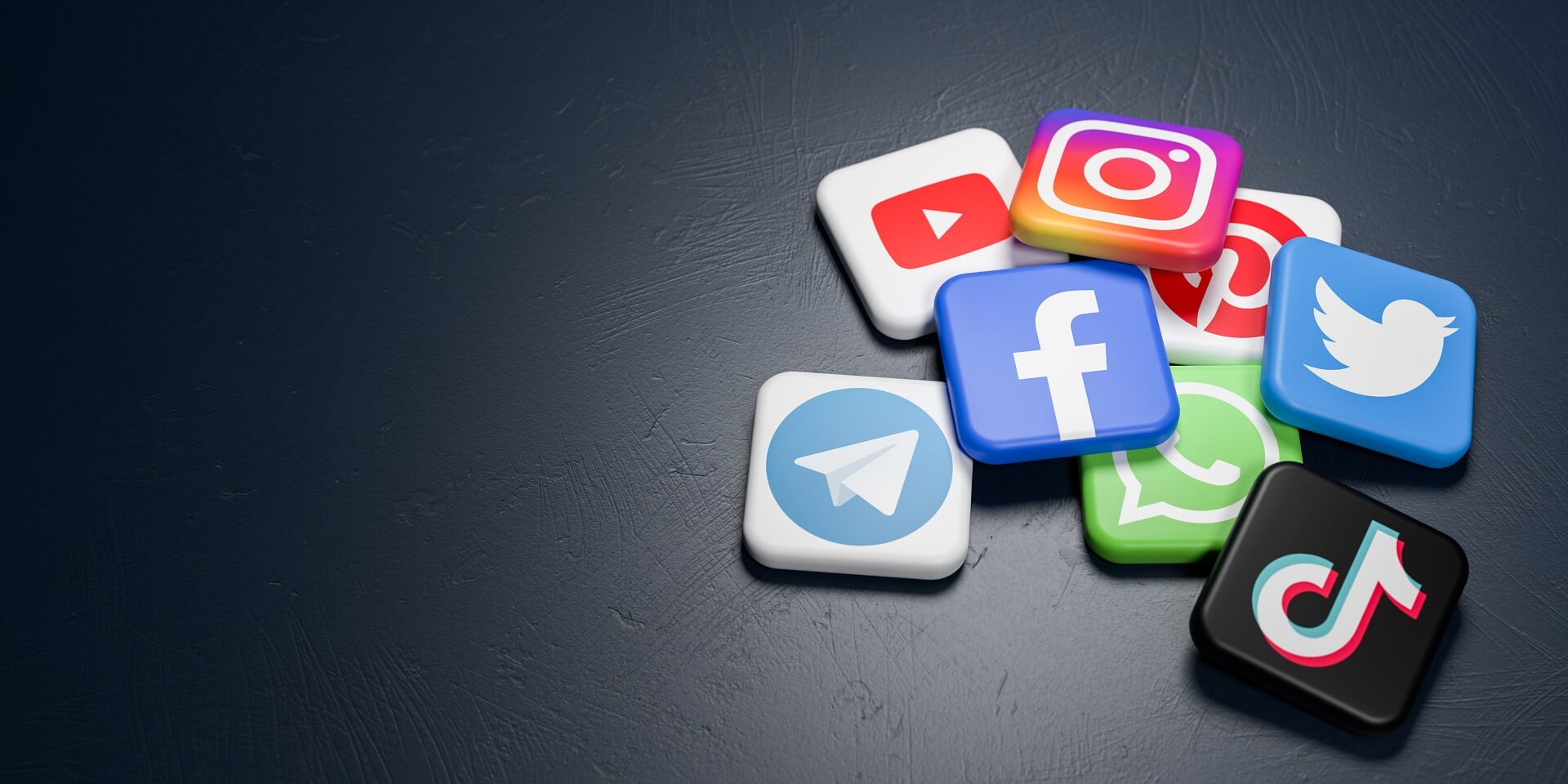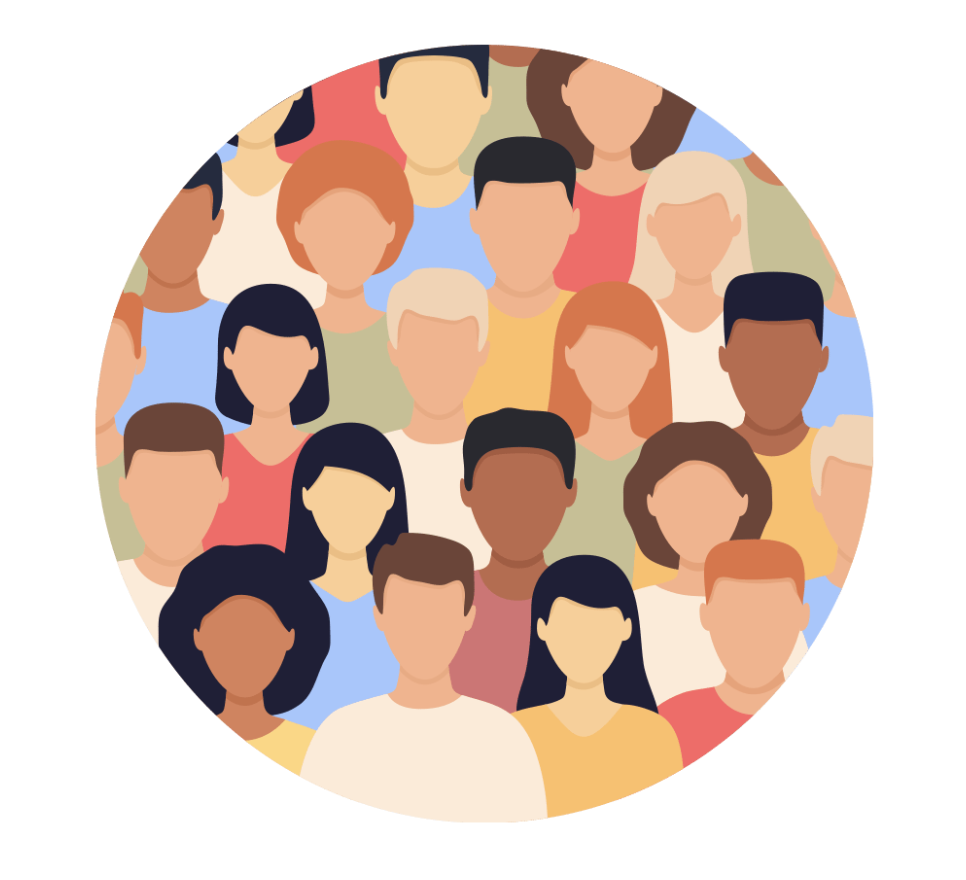Social Media Trump - A Different Kind Of Talk
Think about how we get our news, or really, how we just hear about what's going on with people in the public eye. It wasn't that long ago that we mostly relied on big news channels or newspapers to tell us things. But then, something shifted. Suddenly, you had public figures, very well-known ones, talking directly to everyone, sometimes several times a day, through little messages on their phones. This really changed how we think about communication from leaders, and it made us consider how platforms work, too it's almost.
This way of sharing thoughts, often very immediate and unfiltered, seemed to bypass many of the usual filters we had grown accustomed to. It felt like a direct line, a conversation happening right there, in plain sight, for anyone with a device to see. For many, it was a totally new experience, something that made the world feel a little bit smaller, perhaps even more connected, in a way.
It also brought up some big questions, like what happens when a leader speaks without the usual media processes involved. What does it mean for how we understand events, or for how we form opinions? These are some of the things that started to come up as this new style of public speaking became a very common sight.
Table of Contents
- A Look at the Person
- What was the impact of social media trump?
- Changing How We Talk
- Did social media trump traditional news?
- The Platforms and Their Rules
- How did social media trump change political messaging?
- The Way Forward
- What can we learn from social media trump's approach?
A Look at the Person
When we talk about how public figures use online spaces to communicate, it's pretty hard to ignore the way Donald Trump, a person with a long history in business and entertainment before his time in politics, used these tools. He had already built a public presence for many years, so, he wasn't exactly a stranger to being in the spotlight. His career involved things like real estate development, writing books, and being on television, which meant he already had a way of getting his name out there and connecting with people, you know, in a sort of public way.
His approach to talking to the public, even before he got into politics, was often direct and sometimes quite bold. He had a knack for getting people to pay attention, whether it was through a catchy phrase or a memorable statement. This background, you could say, really set the stage for how he would later use online platforms to talk about things, very much in his own distinctive way. It was a style that many people found quite different from what they were used to seeing from political figures, honestly.
Personal Details and Bio Data
| Full Name | Donald John Trump |
| Date of Birth | June 14, 1946 |
| Place of Birth | Queens, New York City, U.S. |
| Main Professions | Businessman, Television Personality, Politician |
| Political Affiliation | Republican |
| Notable Political Role | 45th President of the United States |
What was the impact of social media trump?
The way Donald Trump used social media, particularly one well-known platform, really shook things up for how we think about public communication. It wasn't just about sharing information; it was about shaping conversations, sometimes very quickly, and reaching a huge number of people directly. This meant that messages could go out without the usual filtering or interpretation that often comes from traditional news organizations. So, in some respects, it felt like a more immediate, less mediated form of interaction, which was a pretty big deal for many folks.
The impact was quite wide-ranging, affecting not just how political news was made and consumed, but also how people generally talked about important topics. It created a situation where a public figure could respond to events, or even create new talking points, almost in real-time. This sped up the news cycle considerably, and it meant that public discourse often happened right there, in the open, for everyone to see and react to. It changed the rhythm of public life, you know, making things feel a little more spontaneous and, at times, more intense.
For individuals, it meant they could follow along, sometimes feeling more connected to the person speaking, or at least more aware of their direct thoughts. It also opened up new ways for people to engage, whether by agreeing, disagreeing, or simply observing the ongoing discussions. This direct line of communication, which was a pretty noticeable part of the social media trump era, really did make a mark on how we understand the relationship between leaders and the people they serve, basically.
Changing How We Talk
Before this period, the usual way a leader would talk to the public involved press conferences, formal speeches, or statements given through official channels. These methods typically allowed for a certain amount of preparation, editing, and often, a chance for reporters to ask questions and provide some context. But the arrival of direct online messages from a very prominent figure, someone like Donald Trump, changed this setup quite a bit. It was a shift from a more formal, controlled way of speaking to something that felt much more immediate and, honestly, less polished. This new approach meant that thoughts could be shared without much delay, which, you know, was a pretty different way of doing things.
This style of communication had a few interesting effects. For one, it made the public conversation feel a lot faster. News could break, or a reaction could be shared, in a matter of moments, almost as it was happening. This meant that traditional news outlets often found themselves reacting to what was said online, rather than being the primary source of information themselves. It flipped the script in a way, making the online platform the first stop for many people looking for direct statements from a public figure. It also meant that the person speaking had a way to talk directly to supporters, or even critics, without a middle person, which was a very different dynamic, to be honest.
The language used in these direct online messages was often quite different from what people expected from official statements. It was frequently more conversational, sometimes even sounding like a personal chat rather than a formal address. This casual tone, which was pretty common in the social media trump communications, made some people feel like they were getting a more genuine, unvarnished look into the speaker's thoughts. Others found it quite jarring, as it broke away from what they considered appropriate for a leader. But regardless of how people felt about it, it certainly got everyone talking about how public figures should communicate in the modern world, basically.
Did social media trump traditional news?
It's a good question to think about whether the way people used online platforms for direct communication really took over the role of older news sources. For a long time, newspapers, television channels, and radio stations were the main places most people went to find out what was happening. They were the gatekeepers, you could say, deciding what information was shared and how it was presented. But then, when a major public figure started putting out their own statements and thoughts directly on online sites, it created a sort of parallel system. This new system allowed information to flow without going through the usual editorial processes, which was a pretty significant change, you know, for how things typically worked.
This direct channel meant that news could be made and spread very quickly, sometimes even before traditional news organizations had a chance to report on it. It put a lot of pressure on these older outlets to keep up, and it meant they often found themselves reporting on what was being said online, rather than being the first ones to break a story. In some ways, it felt like the speed and directness of online platforms gave them an edge, at least in terms of getting immediate messages out. This isn't to say that traditional news became unimportant, but its role did seem to shift a bit, becoming more about providing analysis and deeper context, rather than just being the first to announce something, basically.
So, while online platforms didn't completely replace traditional news, they certainly changed its place in the overall picture. They introduced a new, very powerful way for public figures to communicate, one that challenged the long-standing ways we were used to getting our information. It made people think more about where their news comes from, and it certainly highlighted the idea that there are now many different places to find out what's going on. The question of whether social media trumped traditional news isn't a simple yes or no, but it definitely showed how much things had changed in the way we talk about public matters, honestly.
The Platforms and Their Rules
The rise of public figures using online platforms in such a direct way also brought a lot of attention to the platforms themselves. These companies, which provide the spaces where people share their thoughts, suddenly found themselves in a very prominent position. They had always had rules about what could and could not be said on their sites, but when a world leader was using their service to communicate, those rules took on a whole new level of importance. People started asking really big questions about who decides what's allowed, and what responsibilities these companies have when it comes to public discourse. It was a situation that made everyone, including the platform owners, think very hard about their role in society, basically.
One of the biggest discussions centered around the idea of free speech. Many people believe that everyone should be able to say what they want, especially on public platforms. But then there's also the question of whether there are limits to that, especially when what's being said might cause harm, or spread information that isn't accurate. The platforms had to grapple with these very difficult issues, trying to balance the right to speak freely with the need to keep their sites safe and responsible. This was a completely new challenge for them, as they were suddenly at the center of major debates about public expression and the role of online spaces in shaping our world, you know.
The decisions made by these platforms, especially regarding how they handled content from very influential people, were watched by many across the globe. When a platform decided to, say, remove a post or even suspend an account belonging to a prominent figure, it sent ripples through the public. It made people wonder about the power these companies hold and whether they should have such a say in what is heard and what isn't. This period, very much shaped by the social media trump conversations, really highlighted the complex relationship between technology companies, free expression, and the way our societies communicate, basically.
How did social media trump change political messaging?
Political messaging, the way politicians try to get their ideas across to people, used to follow a fairly set pattern. There were press releases, carefully crafted speeches, and advertisements designed to convey a specific image or policy. But the way a certain political figure, like Donald Trump, used online platforms really changed that game. Instead of relying solely on those traditional methods, he often chose to communicate directly, often in short, immediate bursts of text. This meant that messages could be sent out very quickly, sometimes even in response to something that had just happened, which was a pretty big shift, honestly.
This new approach meant that political messages could feel much more personal and immediate. It was less like a formal announcement and more like a direct conversation, even if it was a one-sided one. This casualness, which was a defining feature of the social media trump style, allowed for a different kind of connection with supporters. It also meant that messages could be very reactive, responding to news cycles or even other politicians' statements in real-time. This sped up the pace of political debate considerably, making it feel more like an ongoing, very public exchange, basically.
Another big change was how quickly messages could spread. When a prominent figure posted something online, it could be shared and seen by millions of people almost instantly. This kind of reach, combined with the directness of the communication, meant that political campaigns and figures had a powerful new tool to get their points across. It changed the way campaigns were run, the way politicians interacted with the public, and even the way news organizations covered politics. So, in a very real sense, the use of these online tools by someone like Donald Trump truly altered the landscape of political messaging, making it much more dynamic and immediate, you know.
The Way Forward
Looking back at how online platforms were used by very public figures, especially during the time when "social media trump" became a common phrase, we can see that it opened up a lot of new ways to think about communication. It showed us that there are now many paths for people in power to talk directly to the public, and that these paths can sometimes bypass the traditional ways of getting information out. This means that we, as the audience, need to be even more thoughtful about where our information comes from and how we interpret what we see online. It's a bit like learning a new language for how we understand public conversations, basically.
This period also sparked important discussions about the responsibilities of the companies that run these online platforms. They are no longer just neutral spaces; they are active participants in shaping public discourse. So, there's a growing conversation about what kind of rules they should have, how they should enforce them, and what their role is in maintaining a healthy public square. It's a complex area, and it's something that societies around the world are still trying to figure out. It shows that technology and how we use it always bring new questions that we need to address as a community, to be honest.
Ultimately, the experience of seeing such a prominent figure use online platforms in such a unique and impactful way has left a lasting mark on how we view public communication. It has made us all, in a way, more aware of the power of direct messaging and the speed at which information can travel. It also highlights the importance of critical thinking when we engage with content online, no matter who it comes from. This is a journey we are all on together, as these digital tools continue to change how we connect and share ideas, you know, every single day.
What can we learn from social media trump's approach?
There are quite a few things we can take away from observing how someone like Donald Trump used online platforms to communicate. One big lesson is about the sheer power of direct communication. He showed that it's possible to reach a huge audience without always going through traditional media channels. This means that public figures now have a very powerful tool to get their messages out quickly and directly, which is something that has certainly changed the political landscape, basically.
Another thing we can learn is about the importance of authenticity, or at least the perception of it. His style, often unpolished and very direct, resonated with many people who felt they were getting a genuine look at his thoughts, even if others saw it differently. This suggests that for some audiences, a less formal, more conversational tone can be very effective in building a connection. It challenges the idea that all public communication needs to be highly structured and formal, you know.
Finally, his approach also highlighted the challenges and responsibilities that come with such direct and widespread communication. It raised questions about the spread of information, the role of platforms in moderating content, and the impact on public discourse. So, it teaches us that while these tools offer incredible opportunities for connection, they also come with significant challenges that we, as a society, need to continue to think about and address. It's a very important lesson for anyone who uses or studies online communication, honestly.
This article explored the significant shift in public communication brought about by a prominent figure's use of social media. We looked at the individual's background, examined the broad impact of this new communication style, and considered how it challenged traditional news sources. The discussion also covered the role of online platforms and their rules, along with the changes seen in political messaging. Finally, we reflected on the lessons learned from this unique approach to public discourse.

Is Social Media Fueling Social Anxiety? – Lehigh Center

The Biggest Social Media Trends in 2023

Home - Dean's Office SEL lessons - LibGuides at J. Sterling Morton High